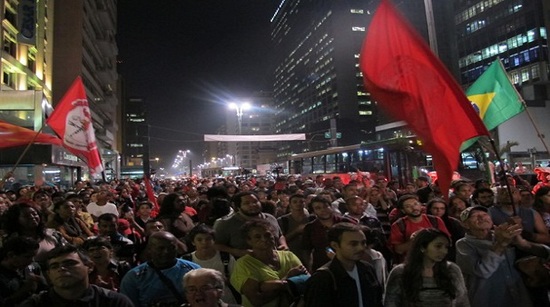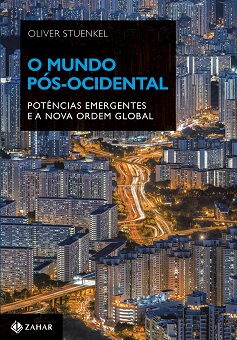Two years ago, anti-corruption marches paralyzed India’s political process for weeks. Led by Anna Hazare, a former soldier turned social activist, tens of thousands of protesters expressed their discontent with India’s ruling political class and called on leaders to provide better public services and fight corruption more effectively. At the time, the stark contrast between India and Brazil seemed inevitable: While perceived corruption in both countries (according to Transparency International’s Global Corruption Index) was similar, citizens’ reaction was very different: India’s newly formed middle class seemed willing to vent its frustration in the streets (as Gandhi once did), yet turnout for anti-corruption marches in Brazil was low and outrage was usually limited to the dinner table conversation.
Yet over the past days, Brazil seems to finally live its Hazare moment. Yesterday, hundreds of thousands of people across the country protested peacefully against bad governance and shoddy public services, including transport, education and health. Brazil is witnessing the largest street demonstrations in more than two decades.
Just like in India, Brazil’s protesters are relatively young, urban, middle-class voters. Just like in India, Brazilian policy makers seemed perplexed and unsure how to respond. Ex-President Lula, one of Brazil’s most savvy politicians, has not made a single statement regarding the protests. Back in 2011, India’s Prime Minister Manmohan Singh called Mr Hazare’s hunger strike against corruption “totally misconceived”, and heir-apparent Rahul Gandhi refused for weeks to speak about the topic. In the same way, Sao Paulo state governor Geraldo Alckmim made comments that exposed a considerable gap in perception of how the country is doing between Brazil’s leaders and the middle class.
Unlike recent protests in many countries that revolved around themes of high youth-unemployment, fear of immigration or government repression, the main focus of protests in both India and Brazil was about corruption and bad governance. India and Brazil, both BRICS countries that can point to enormous economic achievements during the past decades, both boast emerging middle classes that called for better public services.
The major difference between protests in Brazil and India is that those in India had a clear leadership structure and very specific demands. This allowed the movement to develop relative negotiating strength vis-a-vis the government, albeit for a short time.
The big question, then, is whether the protests that shook India in 2011 have made a tangible difference. In the short term, Hazare’s impact was visible. He forced the government to revive a decade-old anti-corruption bill. Indeed, leaders promised to accept his main demand: to set up a lokpal, a powerful anti-corruption body.His movement had an impact on regional elections. Other civil movements awoke partly thanks to his activism. Yet a year after the protests, Hazare was dissatisfied with the lack of progress of setting up the new institution, and his attempt to revive the movement failed. Critics pointed out that India already had a powerful anti-corruption agency, headed by the Comptroller and Auditor General of India (CAG), and that Hazare’s plan would add an unnecessary layer of bureaucracy to India’s system.
It is of course far too soon to assess the medium- or long-term impact of the massive protests in Brazil. At this point, their diffuse structure and all-encompassing nature are a strength – after all, dissatisfation with the country’s rotten political system and inept leaders is widespread. Yet turning this energy into specific demands that impact Brazilian politics will be fiendishly difficult, also because corruption and bad public services are partly due to systemic problems, such as the presence of too many small parties. Still, Brazilian activists could benefit from studying how their counterparts in India attempted to battle corruption and bad public services two years ago as they plan their next steps.
Read also:
As the BRICS rise in Africa, Japan seeks to hold its ground
Photo credit: Guilherme Tosetto/G1









